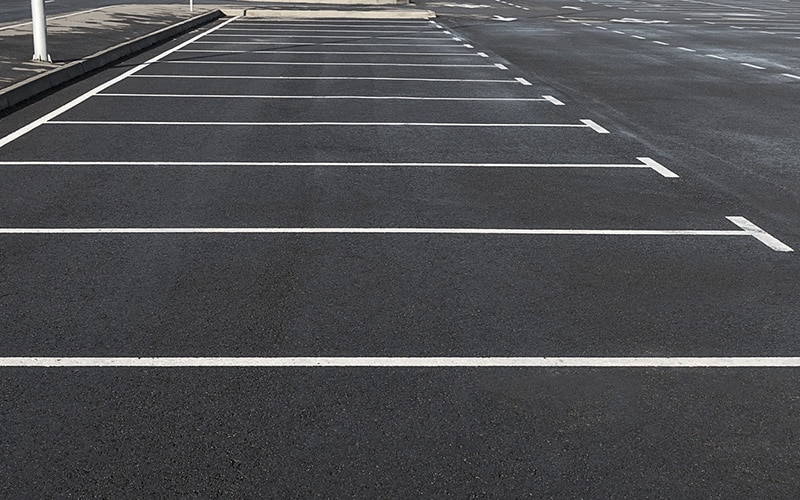Warm Mix Asphalt: A Sustainable Remedy for Pavement
Hot Mix Asphalt (HMA) has actually emerged as a leading lasting option for pavement services, using a myriad of environmental benefits and ingenious innovations. Its capability to recycle products and decrease energy usage offers a compelling case for its fostering in roadway building tasks. The long-term performance and toughness of HMA make it a recommended choice for infrastructure advancement. As the need for environmentally friendly building methods grows, checking out the nuances of HMA's sustainability can supply valuable understandings into the future of sidewalk remedies.
Ecological Benefits of Hot Mix Asphalt

Furthermore, Hot Mix Asphalt helps to alleviate metropolitan warm island results. Its dark color absorbs sunshine, lowering the quantity of heat showed back into the ambience compared to lighter-colored sidewalks. This can reduce ambient temperature levels in urban areas, reducing the need for cooling and inevitably minimizing energy intake.
In enhancement, Warm Mix Asphalt adds to improved stormwater management. Its porous nature allows water to infiltrate the sidewalk and charge groundwater products, decreasing overflow and the danger of flooding. These ecological benefits make Warm Mix Asphalt a lasting selection for leading highways and roads.
Energy Effectiveness in HMA Manufacturing
Is power efficiency a crucial element in the production of Hot Mix Asphalt (HMA)? Power plays a significant role in the production of HMA, influencing both price and ecological sustainability. One vital element of power efficiency in HMA manufacturing is the use of cozy mix asphalt (WMA) innovations.
Moreover, improvements in plant modern technologies have led to even more energy-efficient HMA production procedures. By maximizing energy usage in HMA production, the industry can minimize its carbon impact while keeping premium sidewalk materials.
Recyclability of Warm Mix Asphalt
The recyclability of Hot Mix Asphalt (HMA) is a critical facet of its sustainability and lasting environmental influence. HMA is one of one of the most recycled products in the USA, with over 100 million lots of recovered asphalt sidewalk (RAP) being reused yearly in brand-new sidewalk building. Recycling HMA uses a number of environmental advantages, such as reducing the demand for virgin materials, lowering power intake during production, and reducing the quantity of waste sent to land fills.
The process of reusing HMA involves crushing the existing pavement, crushing it into smaller items, and mixing it with brand-new accumulation and asphalt binder to check create a recycled mix. In general, the recyclability of HMA plays a substantial duty in advertising sustainable techniques within the sidewalk sector.

Long-Term Efficiency of HMA
Asphalt sidewalks demonstrate longevity and resilience over an extensive duration, showing the long-term performance of Warm Mix Asphalt (HMA) In addition, developments in HMA innovation, such as the use of polymer-modified binders and cozy mix asphalt, have further boosted the resilience and longevity of HMA pavements. By prioritizing quality construction and maintenance methods, HMA proceeds to prove itself as a lasting and affordable solution for long-lasting pavement facilities.

HMA: Toughness and Sustainability
Showing both longevity and sustainability, Warm Mix Asphalt (HMA) has actually come to be a foundation in the construction of durable pavement facilities - regrading. HMA's toughness comes from its capacity to hold up against heavy tons, harsh weather, and high traffic volumes, making it recommended you read a trusted selection for streets, freeways, and flight terminal runways. The make-up of HMA, which typically includes aggregates, binder, and filler, plays a crucial duty in boosting its durability and resistance to deterioration
Additionally, HMA's sustainability exists in its recyclability and energy-efficient production process. The capability to recycle redeemed asphalt pavement (RAP) in new HMA mixes lowers the demand for virgin products and decreases the ecological influence of pavement construction and upkeep. In addition, the power performance of creating HMA exists in its lower mixing temperature levels contrasted to various other pavement materials, leading to lowered energy consumption and greenhouse gas exhausts.
Conclusion
In verdict, warm mix asphalt (HMA) supplies a sustainable remedy for sidewalk with its environmentally pleasant qualities. HMA's recyclability, power performance in manufacturing, reference and long-lasting resilience make it an environmentally friendly choice for road construction.
HMA is one of the most recycled materials in the United States, with over 100 million tons of reclaimed asphalt sidewalk (RAP) being reused annually in new pavement building.The process of reusing HMA involves grating the existing pavement, crushing it right into smaller sized pieces, and mixing it with new aggregate and asphalt binder to develop a recycled mix.Asphalt pavements show sturdiness and strength over a prolonged duration, mirroring the long-lasting performance of Warm Mix Asphalt (HMA) Additionally, developments in HMA modern technology, such as the usage of polymer-modified binders and cozy mix asphalt, have further enhanced the toughness and long life of HMA pavements. The capacity to recycle recovered asphalt sidewalk (RAP) in new HMA mixtures reduces the need for virgin products and reduces the ecological influence of sidewalk building and maintenance.